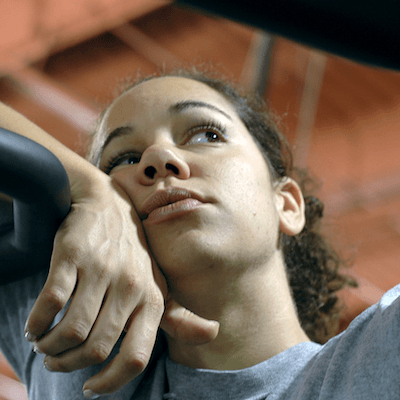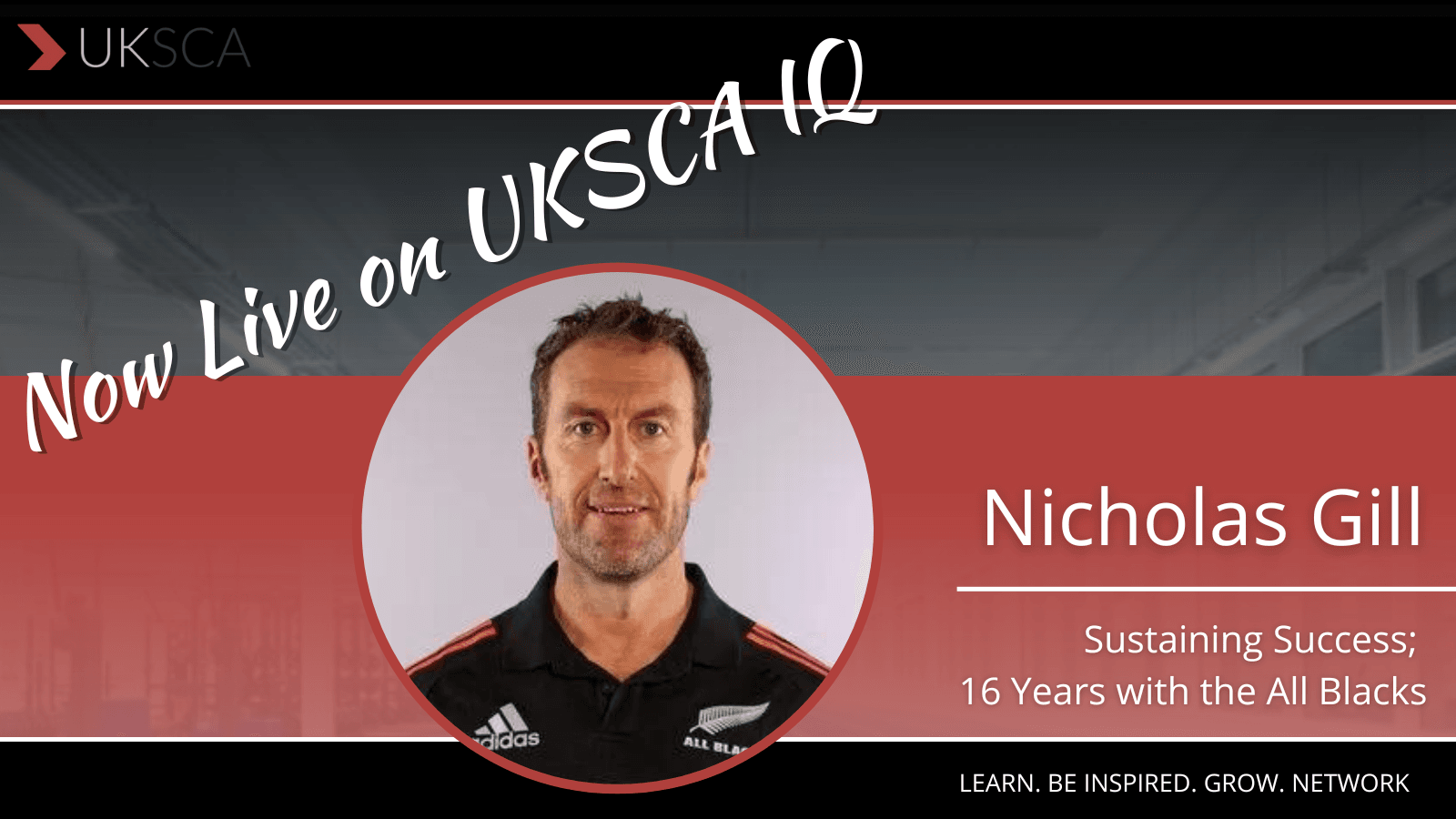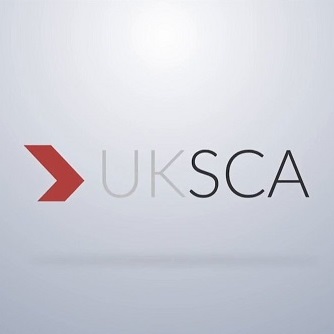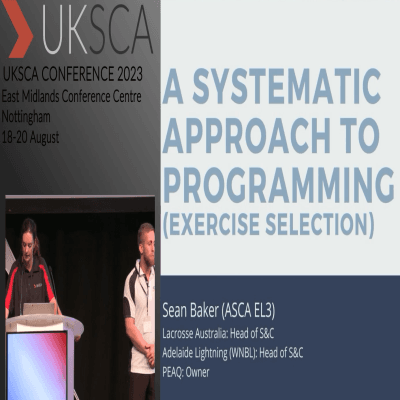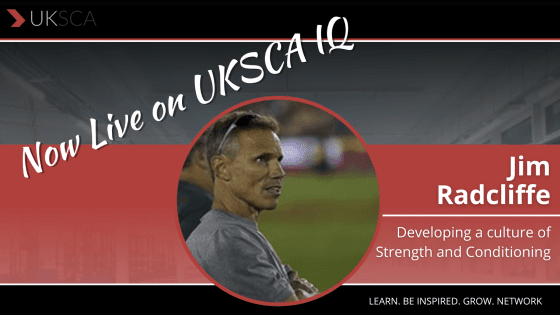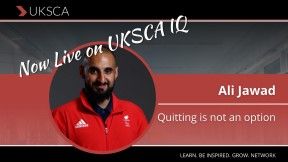


INTRODUCTION
he strength and conditioning (S&C) coach is pivotal to the development of physical prowess in sport, and therefore central to enabling adaptative forms of motivation to optimise sports performance.[12] The coach (and wider support team) thus need a comprehensive understanding of motivation to construct a positive training environment that is sensitive to the elemental motives of the athletes.[21]
Motivation can be defined as the direction, level of effort and commitment.[3] However, athletes will express various levels of motivation for S&C based on multiple contextual factors – eg, professional vs amateur, team vs individual, child vs adult etc.[16] Although there may be several reasons for the lack of buy-in towards S&C, this may originate from the lack of importance a coach gives to the motivational orientation of the student athlete.[22]

SELF-DETERMINATION THEORY
To conceptualise a motivational framework towards training, many academics and coaches have leaned upon the work of Deci and Ryan’s Self Determination Theory, as shown in Figure 1.[6,8,9,11,18,22,28,38,42]
Self-determination theory (SDT) focuses on social factors (eg, coaching style) that shape the numerous forms of motivation through an individual’s impression of psychological needs such as self-determination (autonomy over one’s actions), competence (perceived levels of ability) and relatedness (tribalism).[41] Deci and Ryan, argue that, within SDT, motivation is multidimensional.[8] They determine a continuum with three unique motivational regulations which underpin motives toward behaviour. At one end of the continuum is intrinsic motivation (‘I want to do S&C’) which is defined as the greatest level of self-determination, while at the opposite end amotivation (‘I don’t want to do S&C’), the lowest form of self- determination exists. In between intrinsic motivation and amotivation lie numerous forms of coerced non-self-determined (‘I have to do S&C’) and more volitional self- determined extrinsic motivation (‘I need to do S&C’).[8]
Amotivation
Amotivation represents the omission of any form of intrinsic or extrinsic motivation for S&C, as in the following statements:[37]
‘Why should I do S&C? I’m fit enough playing my sport!’
‘Lifting weights makes you slow and bulky’
‘This training looks nothing like my sport’
Amotivation characterises a behaviour where no action will be taken to do S&C in the immediate future with no intimation shown that that behaviour is problematic.[32] As attitudes towards motivation vary in different sporting environments,[35] it is imperative to acknowledge that those who are new to S&C may be in an amotivated state. To alter this mindset, the ‘transtheoretical model’ (Figure 2) conceptualises behaviour change as a process involving specific interventions towards a desired ‘action’ stage.[32] Therefore, an applicable intervention for those in the amotivated, pre-contemplation stage (ie, ‘not ready for change’) would be to encourage an open and discursive dialogue to enlighten players and staff about the advantages of S&C, using an in-depth evidence-based needs analysis for sport/ athlete in a broader aim to ‘relate’ and align the practice with their beliefs.[22, 28, 37]

Extrinsic Motivation
The next step along the continuum is extrinsic motivation (ie, ‘I have to/need to’) which suggests athletes may engage in S&C not for gratification but forexternal outcomes that come from participation.[24] This could be viewed as an intuitive validation to do S&C for many amotivated athletes. Deci and Ryan[8] proposed four separate extrinsic regulations: self-determined forms (identified and integrated) and non-self-determined forms (external and introjected).[40]
Non-self-determined forms need the coach to effectively force the athlete into training: hockey players engage in hill sprints which may be not the most enjoyable for everyone, hence they are coerced by the coaches (external). Alternatively, they may feel left out or derive feelings of guilt and therefore participate (introjected).
Self-determined forms of extrinsic motivation are internalised within an athlete’s belief system and therefore express a genuine value of the activity.[8] A hockey player identifies that hill sprints will help them outrun a competitor (identified). They may even associate hill sprints with their beliefs about hockey fitness (integrated). Therefore, self-determined and non- self-determined types of motivation can evoke the distinction between those who are engaged and others who are merely compliant.
Intrinsic Motivation
Akin to self-determined forms of extrinsic motivation, intrinsic motives for engaging in S&C appeal to one’s value system, while also going one step higher. Intrinsic motivation attributes doing S&C for the enjoyment and fulfilment derived from engaging in the programme.
Athletes will engage in S&C from self-determined feelings of curiosity, interest, growth, improvement, and mastery of new skills, which are all reported to appease psychological needs of autonomy and satisfaction.[8] It is argued that if these needs are supported within a coaching environment, they will train with greater drive and purpose, and subsequently experience reduced feelings of performance anxiety; it will also encourage problem-solving and optimise skill learning.[9]
This is consistent with findings by Pope and Wilson,[31] who reported that coaching styles which empathised and supported their rugby players’ decisions led to observations of greater effort exerted during training. Therefore, it would appear of paramount importance to learn more about how to nurture this ‘autonomy supportive’ approach within a coaching relationship in order to enhance performance outcomes.
IMPLEMENTATION OF AN 'AUTONOMY SUPPORTIVE' COACHING STYLE
‘Tell me and I will forget. Show me and I will remember. Involve me and I will understand.’ (a Confucian proverb)
An extensive review of research advocates that developing environments for intrinsic motivation and self-determined extrinsic motivation are essential qualities for optimal athlete psychological functioning.[39] The ideal scenario where-by athletes place their motivation towards this end of the spectrum can be formed by implementing a coaching style based on the principles of SDT. This is characterised by Mageau and Vallerand[21] as an ‘autonomy supportive’ environment where a coach involves an athlete in the coaching process to meet psychological needs such as autonomy, relatedness and competence.
The challenge for the S&C coach will be to implement behaviours through the motivational continuum (ie, amotivated -> intrinsic) to fulfil these psychological needs and induce a positive response and outcome from the athlete.[28] Although there are clear benefits for instilling an autonomy-supportive climate, Mallett [22] argues that this will be initially testing for coach and athlete who may be accustomed to more authoritarian approaches, probably due to their own learning experiences.[19;22] Furthermore, Mageau and Valler and advocate that three vital components affect the implementation of the proposed environment: the coach’s style (authoritarian vs diplomatic); contextual considerations behind this style (amateur or elite sport); and impressions of the athlete’s motivational orientation (self-determined or non-self-determined).[21]
Although coaching style and context can be modified by interventions suggested in this paper, it should be considered imperative that the S&C coach attempts to investigate in some detail ‘why’ the prospective athlete(s) plays their sport and participates in S&C – preferably at a personal level – before starting any programme or POA, so that the coach can align, rehash, and guide the athlete.
Failing this due to logistical or other reasons, it would be a good idea for the S&C coach to cautiously investigate perceptions of the athlete’s behaviour on the motivational continuum via the Sports Motivation Scale.[30]
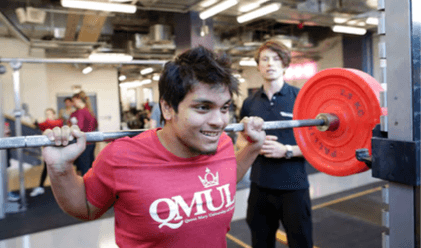
RECOMMENDATIONS FOR AUTONOMY SUPPORTIVE COACH INVOLVEMENT
A review of ‘autonomy supportive’ behaviours has been conceptualised by Mageau and Vallerand,[21] who stipulate a series of recommendations to implement necessary structure and appropriate coach involvement:
1. ‘Provide a rationale for task and limits’
Studies show that, in order to support athletes’ autonomy, coaches need to contribute a rationale for requested tasks.[4,13] Such a rationale facilitates the internalisation of underpinning reasons for activity engagement. Moreover, when an activity seems purposeful, its underlying values are more easily integrated and accepted.
To enhance perceptions of choice, numerous optional strategies may be presented within evidence-based limits. After consulting with technical and support staff, a coach can share and present a comprehensive, 360-degree, needs analysis of the sport and athlete based on views from all stakeholders with a compelling vision of how training may look like in practice for feedback and options. Of course, providing rationales for tasks can exist in real time within sessions (in order to introduce an exercise/modality/intervention), or within the week, month, or year. Crucially the coach’s rationale should also attempt to acknowledge the original ‘why’ and be in tune with how this may have evolved.
The S&C coach can offer advantages and disadvantages for all appropriate options at the micro or macro level relative to the athlete’s development where a mutually agreed direction can give context for agreed limits and rules to ensure progress.
2. ‘Provide choice with specific rules and limits’
Autonomy of choice can increase intrinsic motivation. However, for an athlete to feel competent, they need structure in the form of clear guidelines and rules.[24] Therefore, it is important not to confuse an autonomy supportive approach with a permissive, laissez-faire style. Research has further prompted that, when establishing limits and rules, offering a rationale for these regulations protects people’s motivation by facilitating their endorsement of these rules.[15] As sport involves much training and discipline that is not always enjoyable, athletes cannot rely solely on intrinsic motivation and therefore must turn to extrinsic forms of motivation at times to follow their programmes. It is therefore important for athletes to endorse the value and importance of their training and understand why such rules and limits are in place for appropriate physical development.
A rationale for limits may be set for athletes within an amateur setting to abide to a ‘code of conduct’ outlining the non-negotiables, including supervised/ unsupervised adherence parameters to achieve at least minimal progress. Higher limits for more optimal adaptations are presented where engagement of this is entirely based on choice (training load monitoring methods can be suggested as guides). This is important in many university/amateur/developmental/sport institutions/teams, where logistics only allow for limited group and/or 1-2-1 coaching and a sizeable portion of quality training may be done independently.
3. ‘Acknowledge the other person’s feelings and perspectives’
This point can be closely compared to one of Covey’s seven habits of highly effective people: ‘seek first to understand, then to be understood’.[5] To feel relatedness, athletes need to feel that coaches, other athletes and back-room staff in their social environment are involved and supportive and value their feelings and perspectives. The coach must encourage freely expressed views to achieve collective understanding, where greater perspective can offer context or guide appropriate solutions within agreed limits. Seeking perspective shows that athletes are perceived by their coach as individuals with specific needs and feelings, not mere pawns that should be directed.[24]
4. ‘Provide athletes with opportunities for initiative-taking and independent work’
Autonomy-supportive coaches can promote a choice of tasks that are appropriate for progress and sensitive to the athlete’s motives. One motive may be to feel more robust, fresh, and ready for competition. Therefore, a coach can promote a diary log system which encourages the athlete to record metrics to monitor acute and chronic RPE ratios for all training, in addition to collecting other subjective confounding variables to performance such as wellness scores. In turn, the coach can critically monitor objective data collection from external measures of performance (eg, squat jump, RSI etc) with a greater contextual view (and a conversation) to how athletes are responding to stressors. This can inform more bespoke programming through application of training principles, produce more reliable outcomes, and allow for recovery strategies to reduce injury incidence, fatigue, and enhance readiness.
5. ‘Provide non-controlling competence feedback’
Coaching pedagogy is often viewed as an art that invites a degree of poetic licence – when in fact it is very much science-driven.[44] Despite best intentions, it is tempting (or perceived to be dutiful) for coaches to provide support when it is not needed or impose controlling instructions that are not necessary. This should be considered ‘controlling support’ and is consistent with non-self-determined extrinsic forms which undermine the athlete’s perceived feelings of competence (to do the skill), autonomy (problem-solve) and relatedness (coach/ athlete relationship). By doing this, a coach compromises his or her athlete’s motivation to take the initiative and problem-solve to acquire skill. This ‘coach-centred’ style can run the risk of drilling movements and exercises that do not challenge the athlete, thus producing sub-optimal adaptation and increased risk of amotivation.
In terms of interventions to enhance intrinsic motivation in training, the topic of when and how to provide feedback can be multi-factorial.[27] Many argue that direct verbal feedback is the constraint for effective skill acquisition.[2,7,10,29,43] Compelling evidence leans toward understanding of ‘attentional focus’ and models involving constraints- led progression, where coaches can support optimal athlete psychological functioning as well as enhanced skill acquisition.[2,33,44]
This method of skill acquisition allows the athlete time to explore ‘feel’ implicitly for an able exercise, to problem-solve and to adapt for more effective movement solutions. Coaches can use a variety of feedback methods such as task-focused questioning, instructive, trial and error, video replay, model learning and analogy learning to guide athletes’ thoughts.[27] As instructive feedback is arguably the most used tool, coaches must be selective with effective external cues to help nudge the athlete when necessary.[44]
6. ‘Avoid controlling behaviours’
In extension from the point above, this includes avoiding overt control, criticism and controlling statements, and tangible[6] rewards for interesting tasks. High pressure to perform can often lead to overt controlling behaviours to achieve results from well- meaning coaching staff who, in turn, run the risk of compromising the very motivation they look to increase.[6] Although coaches may argue a compelling case that there can be an occasional need for this to induce arousal or focus, it is important to note that perceived failures by an athlete not to have behaved in a certain way can present a significant threat to the coach-athlete relationship as well as the athlete’s self-esteem.[24] In addition, methods to problem-solve when performing become extrinsically reliant (ie, on the coach), rather than intrinsically instinctive, which has been associated with greater skill expression. The coach can offer informed questions to help an athlete find their own answers but ultimately it is the athlete who chooses the approach – for better or constructively ‘worse’. This can be reflected upon critically with the coach in context of the plan and outcomes post training to progress to more self-determined forms on the continuum.[24]
7. ‘Prevent ego involvement in athletes’
Achievement Goal Theory characterises athletes as task- or ego-focused.[20] A task- centred sports person self-determines their competence based on their own progress; conversely an ego-centred one will match their competence to fellow competitors.[20] The former athlete would garner a sense of accomplishment attaining a personal best (self-determined), while the latter would feel equally satisfied beating their teammates in a gym environment (non-self-determined). As SDT would consider the ego-centred athlete to be sub-optimal, Ntoumanis and Biddle[25] stress that ego-centred athletes may still progress on the continuum to more self-determined forms of motivation, provided an autonomy-supportive climate enables a high task environment. However, it is important to educate athletes away from popular media or brand-driven agendas that steer perceptions of elitism characterised by the need to constantly train maximally. The necessity to facilitate (rather than ‘drive’) athletes to conform to more self-determined forms is important for those that have high aspirations within their sport as athletes who had an increased level of self-referenced motivation in comparison with non-self-referenced athletes performed at a higher level.[1]
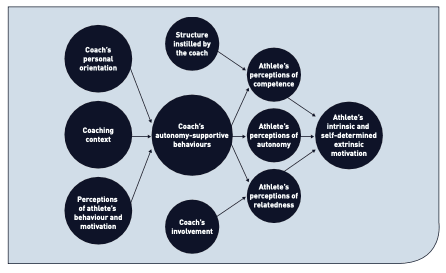
SUMMARY
The purpose of this article was to explore new ways to develop the level of athlete engagement in line with evidence. The evidence reviewed here distinctly shows that an autonomy-supportive coaching style supports optimal forms of motivational orientation that can achieve the highest performance goals. Contradictory to this, many athletes compromise their need for autonomy in order to satisfy their coaches’ plans and expectations. Athletes have achieved exceptional performances by adapting their behaviours to their coaches’ needs: however, research shows promise for improved motivation and enhanced performance if coaches could adapt their own behaviours in order to fulfil their athlete’ needs of autonomy, competence and relatedness.[24]

CONCLUSION
It is the author’s opinion that critical awareness of interpersonal coaching style can be an overlooked component within the S&C coaching process. This lack of attention may be due to its perceived difficulty to assess, measure and validate as a key component to performance within the multi-factorial considerations briefly discussed above. In addition, it can be argued that, given the objective nature of exercise prescription to impose adaptation, athletes who simply ‘turn up’ (aka ‘I have to...’) and follow effective programmes can make the idea of additional psychological considerations impacting motivation rather redundant. However, as training is a process – not a place – such a superficial approach fails to facilitate critical thinking of more global aspects outside of the supervised training environment that help the adaptation process.
Moreover, as S&C service provision continues to evolve and expand its sphere of influence deeper into amateur sport, the challenge for the coach may well be to scale resources and facilitate systems for many athletes to do supervised and additional unsupervised independent training. In such cases where dual athletes have greater responsibility and ownership, there is clearly a compelling need to evaluate a coaching style and management system that increases their involvement in the coaching process. That is, by allowing elements of a ‘player- centred’ (ie, autonomy supportive) approach to achieve ‘buy in’ and facilitate an elevated level of training engagement to achieve optimal outcomes.
A player-centred as opposed to a coach-centred style can make a coach adopting the former approach feel uncomfortable as it implies a permissive, laissez-faire approach to an athlete not qualified to make training decisions, and hence jeopardise outcomes. Indeed, it can equally make an athlete feel uncomfortable – ironically, it could negatively affect perceptions of a coach’s competence, despite the athlete gaining greater intrinsic motivation and a subsequent performance improvement.[24] In the author’s personal experience, involving athletes more in the process by adopting elements of an autonomy- supportive approach can give more information to guide the athlete and inform decisions with greater buy-in.
Although all coaches may have their own philosophical bias on this topic, it is important to objectively state that what may be perceived to be the ‘best’ overall coaching style may not be the right one given context. The principal component here is a coach knowing the difference by critically appraising blind spots in their own style relative to contextual factors and realising how that may affect relationships and subsequent motivation levels given reference to an appropriate theoretical framework – which will also have limitations. As the pendulum shifts in debate toward either coach-centred or athlete-centred styles, I believe the dial rests somewhere in the middle – until given context. If the cardinal rule of training is consistency, it is the coach’s responsibility to construct an environment that supports this behaviour and eliminates behaviours/processes/systems that jeopardise this consistency.
The author considers this approach to be essential, as no matter how much priority a coach puts on planning, devising, and delivering programmes, they will not be followed with meaningful purpose, enjoyment, or skill – inside or outside of the supervised training environment – without the foundational awareness of a robust motivational framework such as SDT, which drives motivation through fulfilling psychological needs.
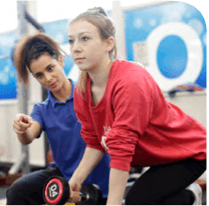
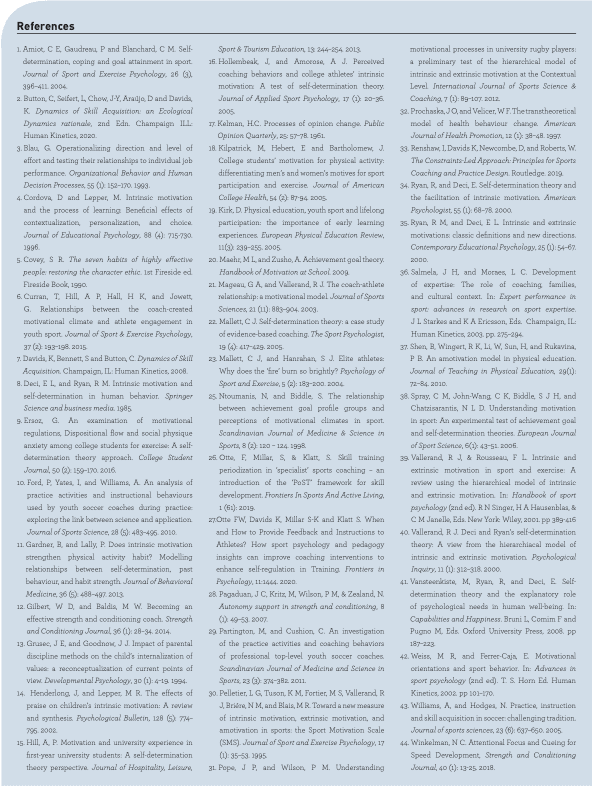

Chris has held programme manager and lead S&C coach roles within higher education sport at Queen Mary University, London, King’s College London and University of Brighton. He has led teams to develop and deliver a broad range of S&C services through in-house delivery and partnerships across the general population, rehabilitation clinics, competitive sport teams, professional sports academies,TASS and elite athletes for the last 10 years.
